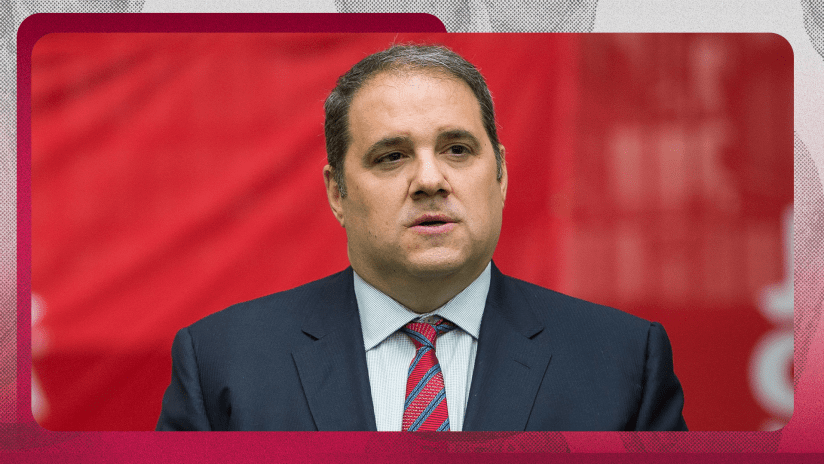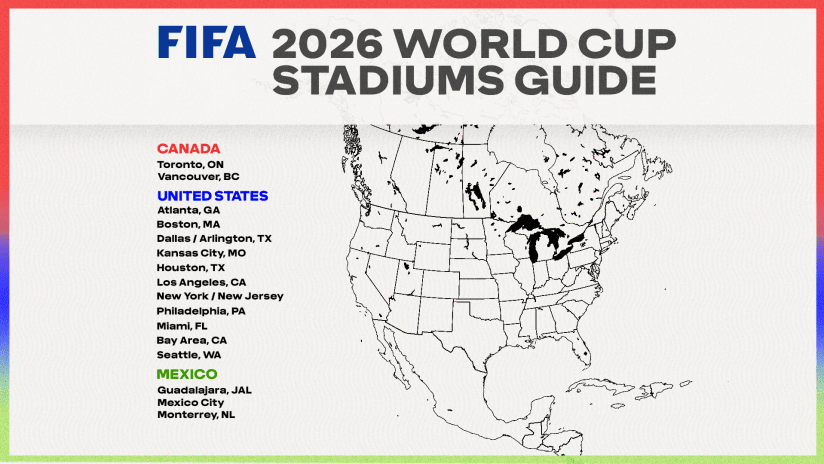Now what?
Among US, Mexican and Canadian national team fans, that’s been a common question after their respective 2022 FIFA World Cup experiences in Qatar concluded across the last week.
The reason is that, as co-hosts of the North America 2026 World Cup, the neighboring nations are expected to auto-qualify and not go through a process like the Concacaf Octagonal until the 2030 World Cup cycle. There will be Nations League and Gold Cup games in 2023, plus opportunities for friendlies, but high-level games are currently scarce while preparing for the sport’s biggest stage on home soil in three-plus years.
Step in reports of the USMNT, CanMNT and El Tri pursuing a place in the 2024 Copa América, at least as guest participants. There’s even speculation that South America’s flagship competition will be hosted in the United States, much like the Copa América Centenario was in 2016.
So, what’s going on?
Discussion level
Concacaf president and FIFA Council member Victor Montagliani provided some clarity during an interview with OneSoccer’s Kristian Jack from Qatar – namely around how that inter-confederation process would even unfold.
“All I have to say is that it is speculation,” said Montagliani, a Canada native. “We are always discussing these matters with all the confederations. But what's important, I think, is there's a bit of misinformation around some of these tournaments.
“It's really not the jurisdiction of a federation or a league to have those discussions,” he continued. “Those discussions are held by the confederations; it's between confederations. My Gold Cup is mine, nobody talks [about] the Gold Cup other than me. Copa America belongs to Conmebol and my partner Alejandro Dominguez. That's where the discussion happens.”
Montagliani didn’t denounce the reports, but definitive announcements from US Soccer, Mexican Football Federation and Canada Soccer – the governing bodies in each country – don’t seem imminent either. These things typically take time, and the 2024 Copa América is currently slated for June and July of that year.
Adding fuel to the fire, Ecuador will no longer serve as host for a Copa América where Argentina enter as defending champions (2021 winners over Brazil). And the US, with built-in infrastructure, could certainly host the tournament.
Competitions sought after
What is clear, Montagliani said, is the US, Mexico and Canada must seek out top-end games to be ready for what’s coming in 2026. It will be the first expanded World Cup (48 teams instead of 32) and held in 16 cities across the three countries.
“We will have those discussions, we've had them, we will continue with all of them to see how we can better our own competitions, maybe create new ones,” Montagliani said. “We will probably have some sort of announcements on any of that stuff probably early in the 2023 stage, because we understand how important it is to have these competitions.”
Montagliani later pointed to the 2021 Arab Cup, which was held in Qatar as a test event for the 2022 World Cup, as a form of inspiration. With a similar preparation purpose, up through 2017 FIFA held the Confederations Cup in a World Cup’s host nation. That competition, held the year before the games arrived, was contested by the holders of each of the six continental championships.
“Those are things that are going to help not just our host nations, of course, but also help all our nations in Concacaf,” Montagliani said.
There’s some precedent around all this, with Mexico featuring in 10 Copa Américas and the United States entering the tournament four times. Canada are yet to feature in South America’s premier showcase.
Should the 2024 Copa América be hosted in the US, it would provide a dry run for the 2026 World Cup – for venues and nations alike. Games against the world’s best teams are a must as international calendars take shape.















